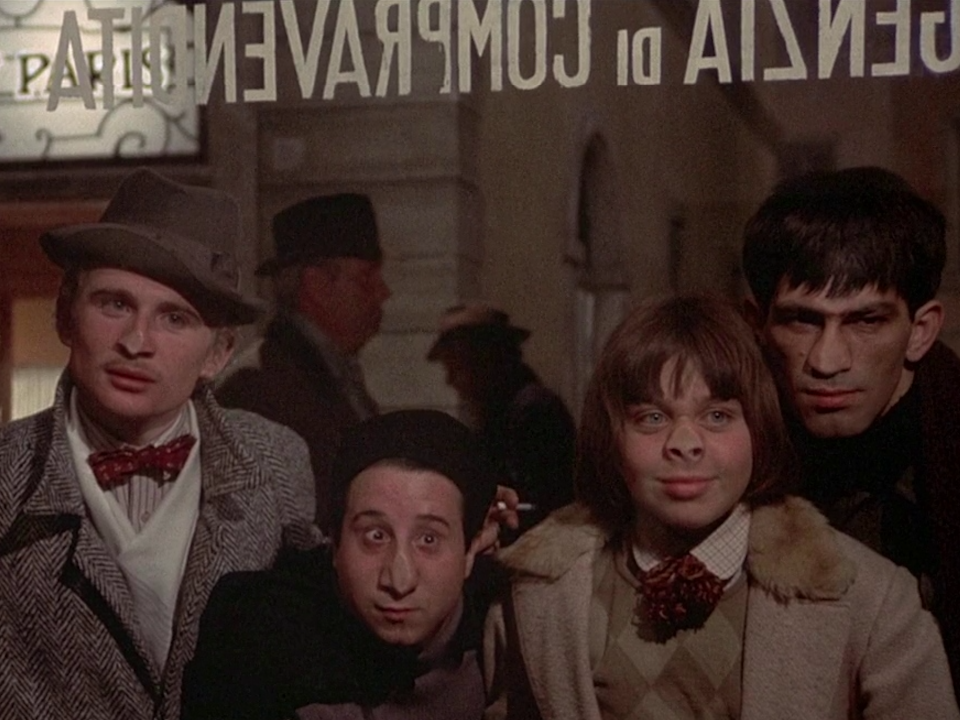
A series of comedic and nostalgic vignettes set in a 1930s Italian coastal town.
“I have the impression that fascism and adolescence continue to be... permanent historical seasons of our lives... remaining children for eternity, leaving responsibilities for others, living with the comforting sensation that there is someone who thinks for you... and in the meanwhile, you have this limited, time-wasting freedom which permits you only to cultivate absurd dreams...”
Federico Fellini
“Amarcord embodies this equivocation between memory and invention, between a world represented (remembered) and a world created (imagined). Amarcord is not memory – or if it is, it is false memory – not fragments of what once was but fragments of what is imagined to have been.”
Sam Rohdie1
« Le sujet d’Amarcord, c’est la jouissance. Mais l’inscrivant dans la fiction d’une mémoire, il l’historise, il la date. Ce qu’inscrit Amarcord, c’est une certaine forme de jouissance, en rapport avec un certain type de mise en scène (par exemple les mises en scène fasciste, religieuse): où l’on jouit d’une vision, d’une révélation, d’un specatc:e, d’un tableau. »
Pascal Bonitzer2
“Amarcord uses certain time-honoured, classical devices (such as a progression through the seasons) to great effect, to wheel through a large variety of modes from the comic to the melancholic. Like many autobiographical tales written or filmed, this one weaves the innocent, blinkered viewpoint of children into its wider social context, which here heralds the reign of Fascism in Italy in the ’30s. Poignant indeed is the gap, gradually revealed to the viewer, between the hints of violence and social exclusion to come (especially in relation to the Jewish population), and the life-affirming high jinks of youth. But children are not the only ones duped, for the politics of Fascism comes to the adoring masses as showbiz – a giant head of Mussolini is paraded through the streets in an especially brilliant sequence poised between comedy and mordant social commentary – and mixed up with the glamorous images of the silver screen, as shown in a heady fantasy sequence happening within the head of town belle La Gradisca (Magali Noël). Fellini’s comedy, refreshingly, goes to the outer limits of vulgarity in a number of hilarious scenes centred on urination, masturbation and breast worship, revisiting the peculiarly Italian form of the teen or twentysomething movie genre which he vigorously pioneered in I Vitelloni (1953). Fellini’s style, sometimes too baroque for its own good in works such as Fellini’s Casanova (1976), is here streamlined into a pure, exalted poetry of mist, flowing camera movements, pastel colours and lightly artificial set design. A triumph of artistic form, its emotions are direct and affecting.”
Adrian Martin3